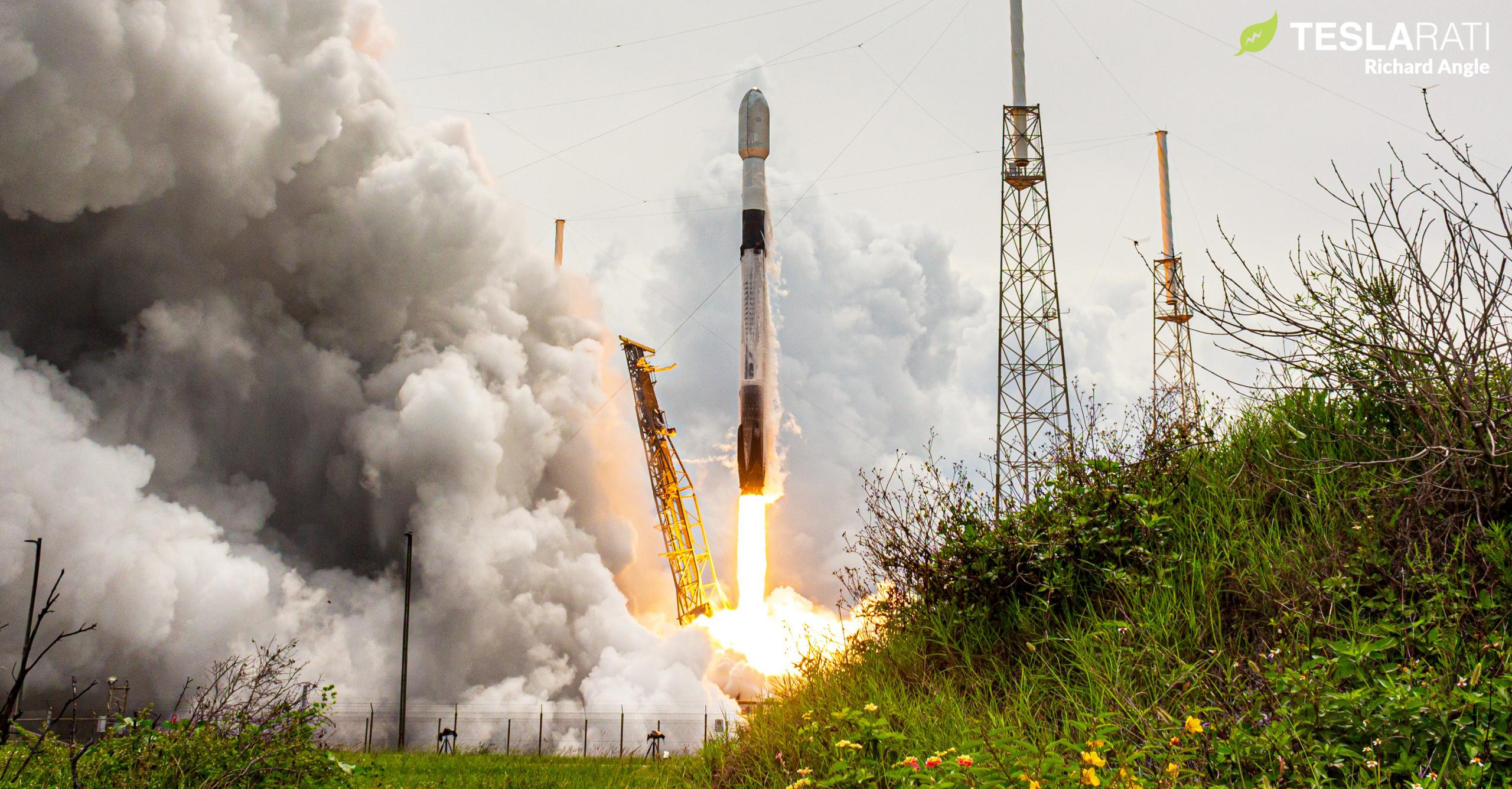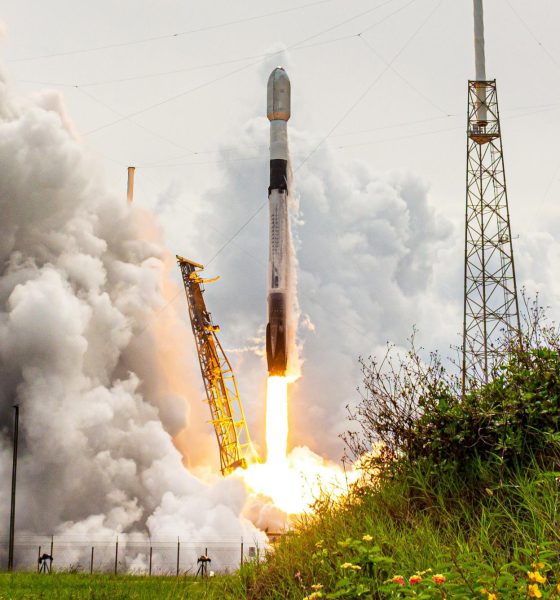

News
SpaceX targeting five East Coast Falcon launches in first month of 2022
In a new statement focused on Cape Canaveral’s “exceptionally busy” 2022 schedule, a senior US Space Force (formerly Air Force) official has implied that SpaceX is already targeting five East Coast launches in the first month of the new year.
While the director didn’t specifically state who is launching, they did confirm that “seven total launches” are scheduled out of Cape Canaveral facilities (including NASA’s Kennedy Space Center) in January 2022 – five to “polar” orbits and two to more traditional semi-equatorial inclinations. While most of the “polar” launches referred to are likely not actually polar under the definition of launching satellites that will more or less orbit the Earth’s poles, the phrase still all but guarantees that five of those planned launches are Falcon 9 rockets.
The news cuts both ways, though, as it also strongly implies that SpaceX’s first Falcon Heavy launch in more than two and a half years will have to wait until February 2022 at the earliest.
Of the seven launches the Cape Canaveral Space Force Station (CCSFS) operations director says are targeted for January 2022, public schedules indicate with confidence that two are non-SpaceX. A United Launch Alliance (ULA) Atlas V rocket appears to remain on track to launch the Space Force’s USSF-8 mission – a pair of geostationary surveillance satellites for the US military – no earlier than January 21st. Additionally, while delays are likely, startup Astra revealed plans last month to attempt its first Cape Canaveral ‘Rocket 3’ launch in January 2022.
Beyond those two missions, there is no evidence of other non-SpaceX launches planned this month, which implies that SpaceX is responsible for all five other missions. Delays are obviously possible but SpaceX has already repeatedly demonstrated the ability to complete four East Coast launches in less than a month.
Up first, SpaceX is scheduled to start another potentially record-breaking year of launches with its Starlink 4-5 mission, which is on track to lift off no earlier than (NET) 4:49 pm EST (21:49 UTC) on Thursday, January 6th. NET 10:25 am EST (15:25 UTC), January 13th, another Falcon 9 rocket is scheduled to launch SpaceX’s third dedicated rideshare mission (Transporter-3), sending another batch of several dozen small satellites to orbit. SpaceX’s last confirmed launch of the month is Italy’s CSG-2 Earth observation satellite, which is scheduled to fly on another Falcon 9 rocket as early as late January. Two are headed to actual semi-polar orbits, while Starlink 4-5 is targeting a 53.2-degree orbital inclination – far from polar but still requiring Falcon 9 to launch to the southeast.
That leaves room for two more Starlink launches to hit the USSF’s estimate five “polar” missions – if SpaceX can manage the feat. Based on SpaceX’s record LC-40 and LC-39A turnaround times, beginning launches on January 6th ramps up the difficulty but doesn’t make five launches impossible. Assuming SpaceX can repeatedly turn both LC-40 and LC-39A around in ~10 days, SpaceX could theoretically launch Starlink 4-5 on 1/6 (39A), Transporter-3 on 1/13 (LC-40), Starlink x-x on 1/16 (39A), CSG-2 on 1/23 (LC-40), and Starlink x-x on 1/26. Technically, CSG-2 could launch anytime after Jan 22nd or 23rd and the third hypothetical Starlink mission could also tolerate up to five days of delays before it would slip into February.
Finally, depending on how strong Starlink V1.5 production is, SpaceX’s West Coast Vandenberg facilities could technically support one launch this month. It’s also possible that SpaceX will hold off on internal missions to ensure pad readiness for the US military’s NROL-87 Falcon 9 launch – scheduled NET February 2nd, 2022 as of four months ago.

News
Tesla FSD fleet is nearing 7 billion total miles, including 2.5 billion city miles
As can be seen on Tesla’s official FSD webpage, vehicles equipped with the system have now navigated over 6.99 billion miles.

Tesla’s Full Self-Driving (Supervised) fleet is closing in on almost 7 billion total miles driven, as per data posted by the company on its official FSD webpage.
These figures hint at the massive scale of data fueling Tesla’s rapid FSD improvements, which have been quite notable as of late.
FSD mileage milestones
As can be seen on Tesla’s official FSD webpage, vehicles equipped with the system have now navigated over 6.99 billion miles. Tesla owner and avid FSD tester Whole Mars Catalog also shared a screenshot indicating that from the nearly 7 billion miles traveled by the FSD fleet, more than 2.5 billion miles were driven inside cities.
City miles are particularly valuable for complex urban scenarios like unprotected turns, pedestrian interactions, and traffic lights. This is also the difference-maker for FSD, as only complex solutions, such as Waymo’s self-driving taxis, operate similarly on inner-city streets. And even then, incidents such as the San Francisco blackouts have proven challenging for sensor-rich vehicles like Waymos.
Tesla’s data edge
Tesla has a number of advantages in the autonomous vehicle sector, one of which is the size of its fleet and the number of vehicles training FSD on real-world roads. Tesla’s nearly 7 billion FSD miles then allow the company to roll out updates that make its vehicles behave like they are being driven by experienced drivers, even if they are operating on their own.
So notable are Tesla’s improvements to FSD that NVIDIA Director of Robotics Jim Fan, after experiencing FSD v14, noted that the system is the first AI that passes what he described as a “Physical Turing Test.”
“Despite knowing exactly how robot learning works, I still find it magical watching the steering wheel turn by itself. First it feels surreal, next it becomes routine. Then, like the smartphone, taking it away actively hurts. This is how humanity gets rewired and glued to god-like technologies,” Fan wrote in a post on X.
News
Tesla starts showing how FSD will change lives in Europe
Local officials tested the system on narrow country roads and were impressed by FSD’s smooth, human-like driving, with some calling the service a game-changer for everyday life in areas that are far from urban centers.

Tesla has launched Europe’s first public shuttle service using Full Self-Driving (Supervised) in the rural Eifelkreis Bitburg-Prüm region of Germany, demonstrating how the technology can restore independence and mobility for people who struggle with limited transport options.
Local officials tested the system on narrow country roads and were impressed by FSD’s smooth, human-like driving, with some calling the service a game-changer for everyday life in areas that are far from urban centers.
Officials see real impact on rural residents
Arzfeld Mayor Johannes Kuhl and District Administrator Andreas Kruppert personally tested the Tesla shuttle service. This allowed them to see just how well FSD navigated winding lanes and rural roads confidently. Kruppert said, “Autonomous driving sounds like science fiction to many, but we simply see here that it works totally well in rural regions too.” Kuhl, for his part, also noted that FSD “feels like a very experienced driver.”
The pilot complements the area’s “Citizen Bus” program, which provides on-demand rides for elderly residents who can no longer drive themselves. Tesla Europe shared a video of a demonstration of the service, highlighting how FSD gives people their freedom back, even in places where public transport is not as prevalent.
What the Ministry for Economic Affairs and Transport says
Rhineland-Palatinate’s Minister Daniela Schmitt supported the project, praising the collaboration that made this “first of its kind in Europe” possible. As per the ministry, the rural rollout for the service shows FSD’s potential beyond major cities, and it delivers tangible benefits like grocery runs, doctor visits, and social connections for isolated residents.
“Reliable and flexible mobility is especially vital in rural areas. With the launch of a shuttle service using self-driving vehicles (FSD supervised) by Tesla in the Eifelkreis Bitburg-Prüm, an innovative pilot project is now getting underway that complements local community bus services. It is the first project of its kind in Europe.
“The result is a real gain for rural mobility: greater accessibility, more flexibility and tangible benefits for everyday life. A strong signal for innovation, cooperation and future-oriented mobility beyond urban centers,” the ministry wrote in a LinkedIn post.
News
Tesla China quietly posts Robotaxi-related job listing
Tesla China is currently seeking a Low Voltage Electrical Engineer to work on circuit board design for the company’s autonomous vehicles.

Tesla has posted a new job listing in Shanghai explicitly tied to its Robotaxi program, fueling speculation that the company is preparing to launch its dedicated autonomous ride-hailing service in China.
As noted in the listing, Tesla China is currently seeking a Low Voltage Electrical Engineer to work on circuit board design for the company’s autonomous vehicles.
Robotaxi-specific role
The listing, which was shared on social media platform X by industry watcher @tslaming, suggested that Tesla China is looking to fill the role urgently. The job listing itself specifically mentions that the person hired for the role will be working on the Low Voltage Hardware team, which would design the circuit boards that would serve as the nervous system of the Robotaxi.
Key tasks for the role, as indicated in the job listing, include collaboration with PCB layout, firmware, mechanical, program management, and validation teams, among other responsibilities. The role is based in Shanghai.
China Robotaxi launch
China represents a massive potential market for robotaxis, with its dense urban centers and supportive policies in select cities. Tesla has limited permission to roll out FSD in the country, though despite this, its vehicles have been hailed as among the best in the market when it comes to autonomous features. So far, at least, it appears that China supports Tesla’s FSD and Robotaxi rollout.
This was hinted at in November, when Tesla brought the Cybercab to the 8th China International Import Expo (CIIE) in Shanghai, marking the first time that the autonomous two-seater was brought to the Asia-Pacific region. The vehicle, despite not having a release date in China, received a significant amount of interest among the event’s attendees.








